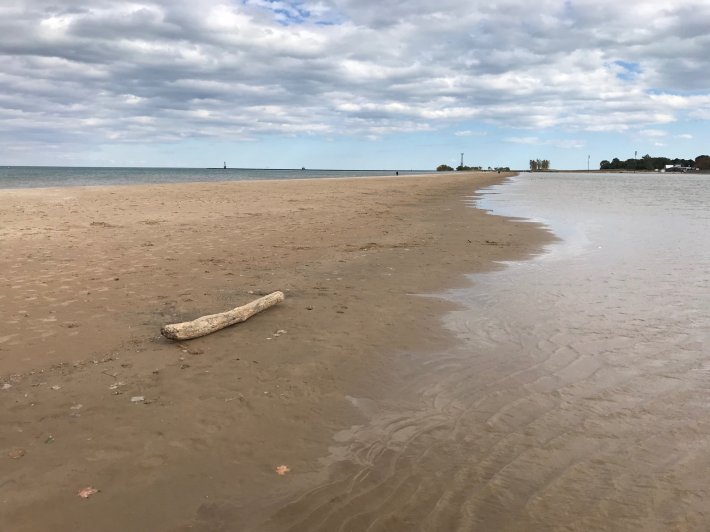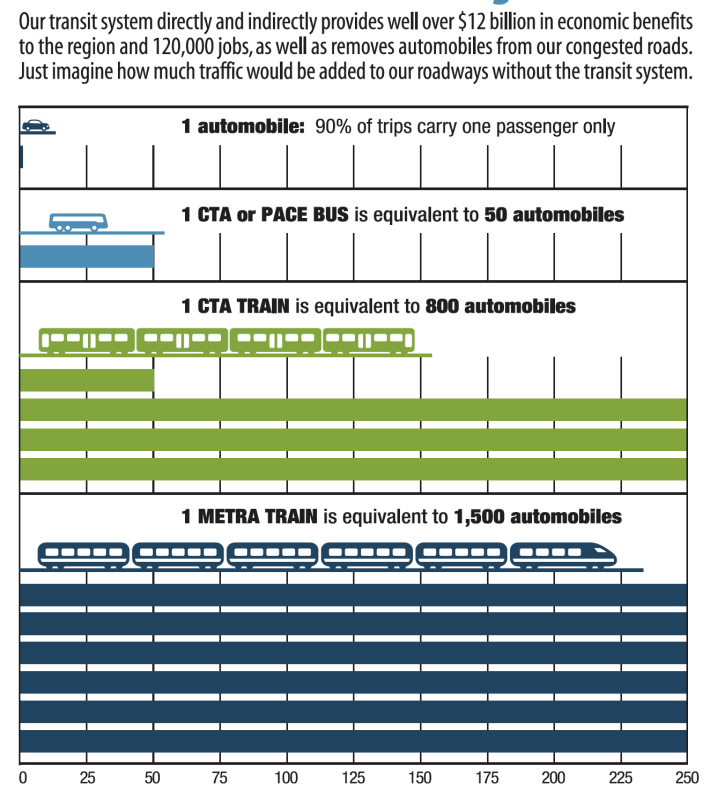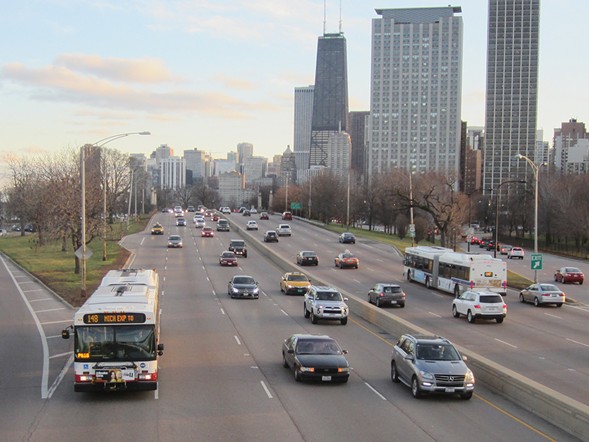
Montrose Beach has turned into Montrose Isthmus. The last time I visited, the sandy expanse was almost completely covered with water due to high lake levels. The story is the same at many other local beaches, and Chicago officials are worried about what's going to happen to Lake Shore Drive infrastructure and buildings near the shoreline this winter. Obviously climate change is already affecting our lives, and things are sure to get worse in the future if we don't take bold action now, including reducing transportation-related emissions.
But this week's Chicago Tribune editorial on the North Lake Shore Drive reconstruction totally ignores the looming threat of climate change, acting like the best course of action is maintaining our car-centric status quo. The paper is literally less concerned with saving our planet from destruction than making sure that people who currently drive to work aren't mildly inconvenienced by having to shift their commuting habits.

The editorial writers makes a number of dubious recommendations. They argue that straightening out the S-curve at Oak Street Beach through infill should be a priority so that motorists don't have to suffer the indignity of slowing to 25 mph on the bend but can instead cruise along at a 40 mph speed limit, likely faster, without hitting the brakes. They also call for a new overpass to eliminate the stoplight at Chicago Avenue. Preservation Chicago wrote an extensive post decrying such strategies that would make the drive "look and feel less like a parkway boulevard... and much more like an Interstate highway."
But by far the worst part of the Tribune editorial is its dismissal of the option of converting two of the lanes to dedicated bus lanes. That's a strategy that sustainable transportation advocates have been calling for for many years, which the Chicago and Illinois transportation departments are currently contemplating. "We think that takes up too much roadway real estate, and would make congestion much worse than it is now," was the paper's windshield-view opinion.
The Trib shows once again how completely out of touch they are by calling for only car-centric improvements to Lake Shore Drive. Um, no, bus-only lanes won't "take up too much roadway" nor will it make congestion worse. https://t.co/tJy8E1MZRY
— Michelle K Stenzel (@MichelleStenzel) November 25, 2019
Instead, the Trib wants "managed lanes" that would allow affluent or time-crunched drivers to pay a premium to bypass the usual rush-hour traffic slog. It argues that this would also increase the speed of CTA buses, which would be allowed in the lanes. In the past, the Active Transportation Alliance has noted that this strategy would be pointless. "Over time, these lanes can become congested with cars again, and it would be politically difficult for the state to keep raising tolls or car-occupancy minimums."
You know what really takes up to much roadway real estate and makes congestion on LSD terrible during rush hours? The many, many large metal boxes containing a single occupant or passenger, a ridiculously space-inefficient way to transport people across a dense city. Plenty of these individuals have selfishly opted to drive or take ride-hail to work when transit was a practical option. In light of the climate change threat, it's ridiculous that the Trib feels we need to keep accommodating this lifestyle choice.

In contrast, CTA buses are a very space-efficient way to transport people. According to the North LSD reconstruction planners, cars on the drive carry an average of 1.2 people. Meanwhile, a 60-foot articulated CTA bus seats about 50 people (not counting standees) and takes up less room on the highway than two average-size cars, when you factor in the necessary distances between vehicles.
As such, buses deserve dedicated, car-free lanes, not managed lanes full of other vehicles. The increased speeds will attract more ridership -- which the CTA should accommodate with more frequent service -- taking cars out of the remaining six lanes on the drive. It's possible congestion in those lanes might get a bit worse (although it might get better), but the important thing is that more residents will be getting to work more efficiently, with far fewer emissions.
This is why we need bus lanes on Lake Shore Drive. I made some generous assumptions when annotating the image, namely that the buses were full but not crowded and that each car had 1.08 people in them - the city average given Census-reported carpooling rates. pic.twitter.com/MS9QchNzu7
— Jeremy Glover (@JGrantGlover) October 10, 2019
Editorials like these pander to the Tribune's right-leaning, car-focused suburban readership. But we need to disregard these small-minded concerns and redesign the drive in the manner that's best for our city and our planet. After all, in the future we should to be able to enjoy Chicago's beaches while lying on a beach towel, not a raft.



